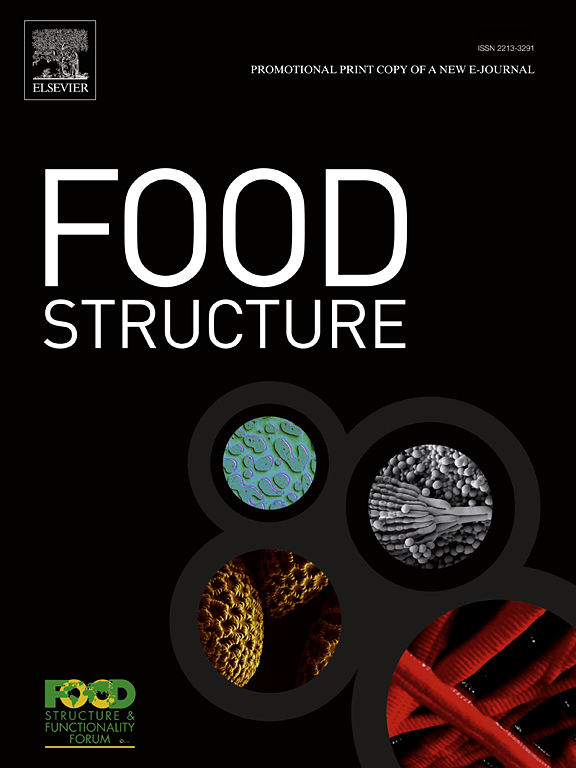利用声波诱导空化技术加速棕榈油结晶
IF 5.9
3区 农林科学
Q1 FOOD SCIENCE & TECHNOLOGY
引用次数: 0
摘要
本研究比较了声波诱导空化产生(AWICG: 100 Hz, 20 W, 5 s)与高强度超声(HIU: 24 kHz, 200 W, 5 s)在加速棕榈油结晶方面的效果。固体脂肪含量分析表明,AWICG实现了与HIU相当的初始结晶生长速率。使用偏振光显微镜和分形维数量化的微观结构分析揭示了不同的结晶机制:在储存14天后,与HIU和对照组相比,AWICG处理导致晶体网络明显更密集、更紧凑(p <; 0.05),而没有改变晶体大小,而HIU产生的晶体更小,组织更少,结构聚集体更弱。使用葵花籽油(一种氧化敏感性模型)进行感官评估表明,与hiu处理的样品不同,awicg处理的样品没有可检测到的异味(p <; 0.001)。这些发现强调了AWICG通过共振法拉第波驱动空化来提高晶体成核效率的潜力。其较低的能耗和稳定的晶体网络形成表明,AWICG是脂质加工的可持续和有效的替代品,解决了结晶动力学和氧化挑战。本文章由计算机程序翻译,如有差异,请以英文原文为准。
Accelerating crystallization of palm oil using acoustic wave induced cavitation technology
This study evaluates the effectiveness of acoustic wave-induced cavitation generation (AWICG: 100 Hz, 20 W, 5 s) compared to high-intensity ultrasound (HIU: 24 kHz, 200 W, 5 s) in accelerating palm oil crystallization. Solid fat content analysis showed that AWICG achieved initial crystallization growth rates comparable to HIU. Microstructural analysis using polarized light microscopy and fractal dimension quantification revealed differing crystallization mechanisms: After 14 days of storage, AWICG treatment resulted in significantly denser and more compact crystal networks compared to HIU and the control (p < 0.05), without altering crystal size, whereas HIU produced smaller crystals associated with less organized and weaker structural aggregates. Sensory evaluation using sunflower oil, a model for oxidation susceptibility, demonstrated that AWICG-treated samples exhibited no detectable off-odors, unlike HIU-treated samples (p < 0.001). These findings underscore AWICG’s potential in enhancing crystal nucleation efficiency via resonant Faraday wave-driven cavitation. Its lower energy consumption and stable crystal network formation suggest AWICG as a sustainable and effective alternative for lipid processing, addressing both crystallization kinetics and oxidation challenges.
求助全文
通过发布文献求助,成功后即可免费获取论文全文。
去求助
来源期刊

Food Structure-Netherlands
Chemical Engineering-Bioengineering
CiteScore
7.20
自引率
0.00%
发文量
48
期刊介绍:
Food Structure is the premier international forum devoted to the publication of high-quality original research on food structure. The focus of this journal is on food structure in the context of its relationship with molecular composition, processing and macroscopic properties (e.g., shelf stability, sensory properties, etc.). Manuscripts that only report qualitative findings and micrographs and that lack sound hypothesis-driven, quantitative structure-function research are not accepted. Significance of the research findings for the food science community and/or industry must also be highlighted.
 求助内容:
求助内容: 应助结果提醒方式:
应助结果提醒方式:


